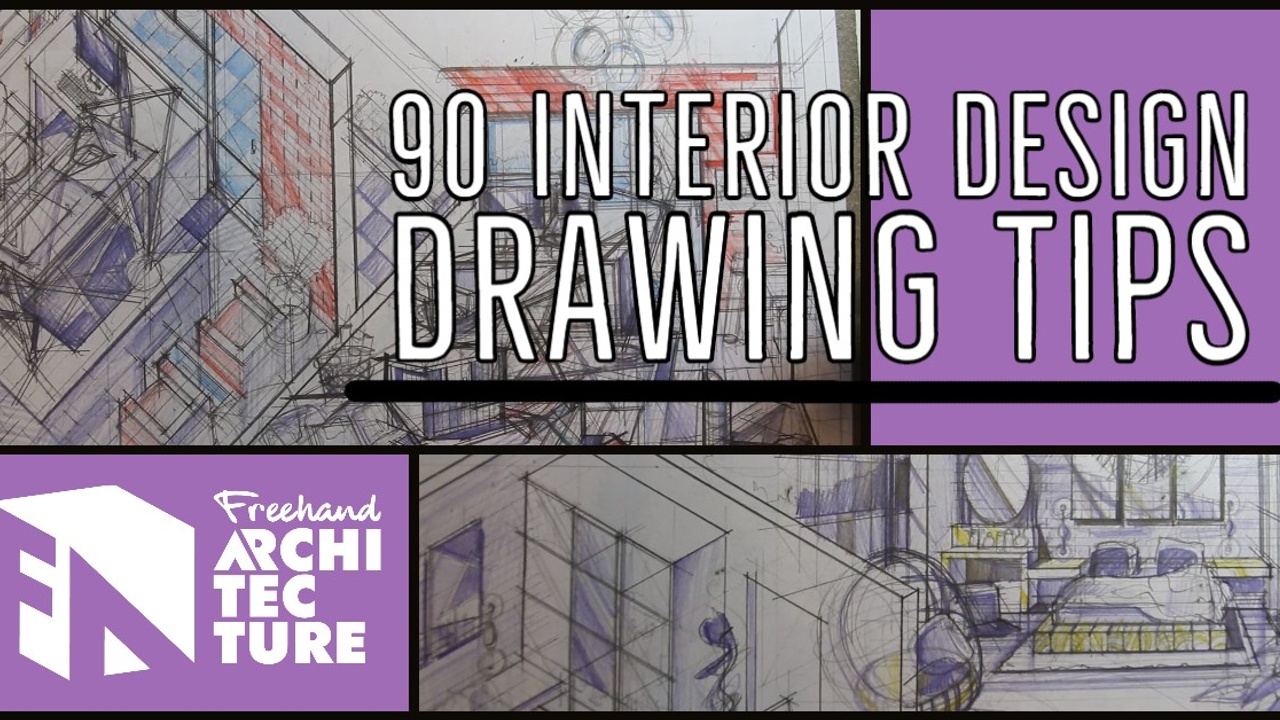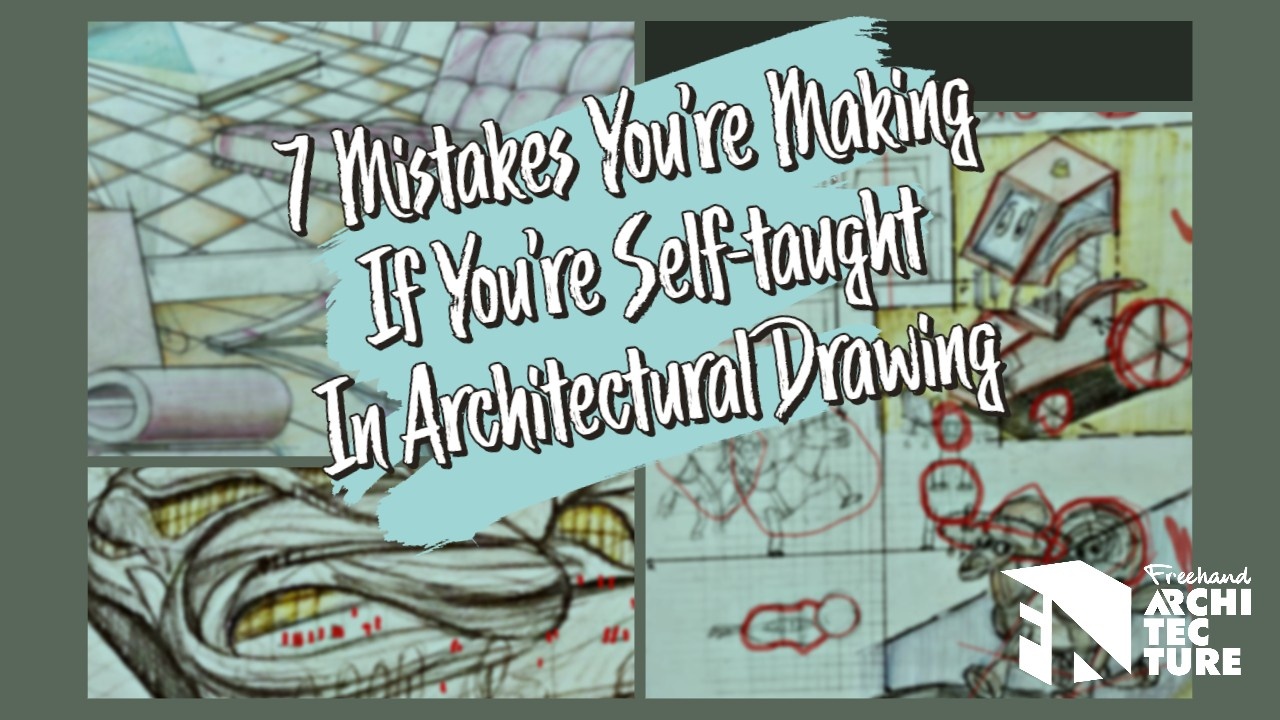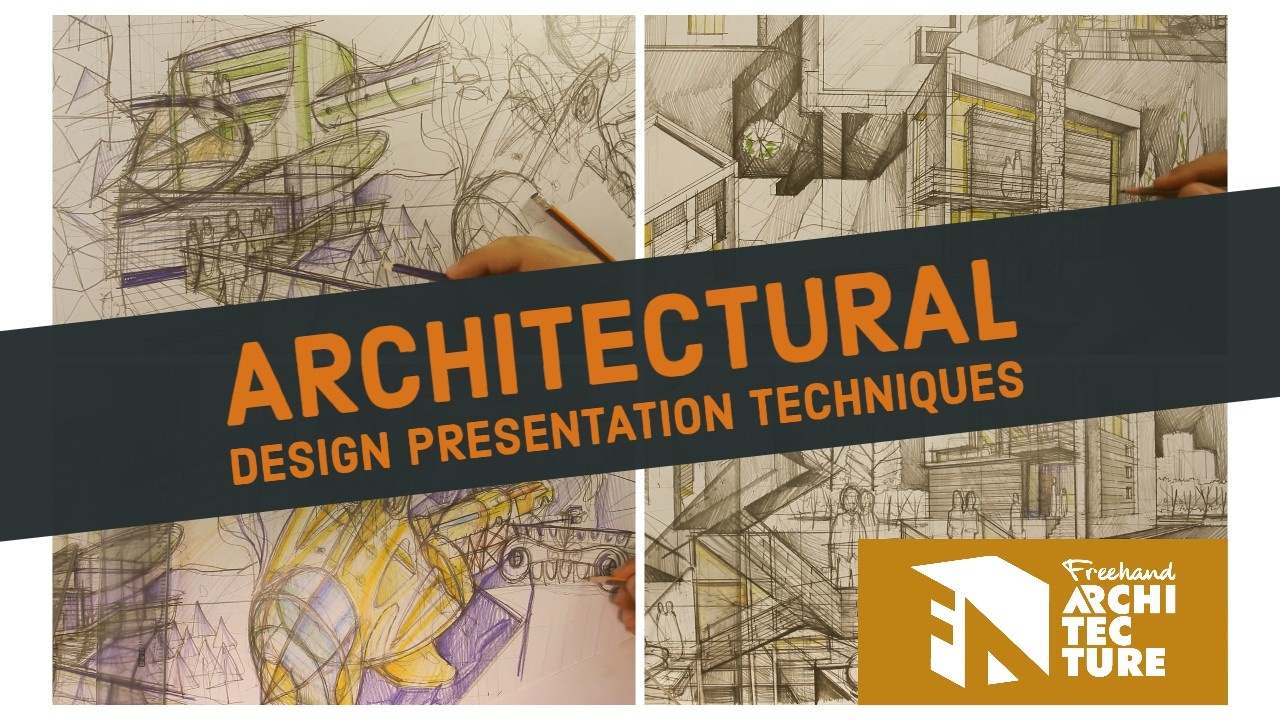90 Interior Design Drawing Tips
Sep 15, 2022
If applied to your own work, what you learn here can be much more than just simple information…
You can take your approach to drawing and designing interior spaces to the next level.
You need to know how to draw interior designs because this is how all designs work… you first see a project in your mind’s eye, then you end up drawing it, then designing and building it.
So in that regard drawing will help you every step of the way – from generating ideas, to putting them on paper, to helping you understand how the final piece will look like.
Here’s 30 of the best interior design drawing tips split into three categories: graphics and drawing, design and final layout.
Enjoy!
Graphics and Drawing
1.)Use Colours. Interior designs are made to be colourful, full of emotion and expression of self, so to get that from a drawing you need to use colours. Don’t settle for the cliché architect’s approach of just showing depth of space – you need to show emotion and the personal story behind every image.
2.)Start off with two colours then slowly add more. By approaching colour this way you spare yourself a lot of headache: the hardest thing to do is start with seven colours at a time and end up with something that doesn’t look rubbish.
3.)Master 1-point interior perspective. You’re best off using 1 point perspective just because you got the option of showing three different walls at the same time. Two-point perspectives work for showing local details of interiors.
4.)Use a very strong foreground with 2-3 detailed objects. These could be furniture, chairs, lighting fixtures etc.
5.)Draw cast shadows and volume shadows for all the objects in your drawing. No drawing looks good in the absence of shadow and light… take that to full advantage.
6.)Draw repetitive textures such as tiling, parquet. This will add a lot of info to your drawing and give an extra sense of spatial depth. All very good for getting high quality work.
7.)Draw reflections all the time – it will give your work that special something and make it stand out… can’t really explain it but reflections always add a special finish to all drawings.
8.)Draw all the furniture white. This will make colouring a lot easier and save you quite a bit of time overall…
9.)Use lighting effects to make your drawing look alive and vivid. This works really well when doing drawings in crayon as it is quite easy to erase and it adds contrast.
10.) Learn a couple of standard posters and graphics pieces you can use throughout all of your work. You need to build up a repertoire of different drawing tricks so your work fits the 80/20 priciple: 80% of your drawing is the same, 20% is new and specific to the certain brief.
Design
1.)Always make the floor more heavy than the other parts of your drawing. This is so all your perspectives have that gravity to them… You can do this by adding a stronger colour on the floor, by adding tyles and textures, by adding a reflection and by drawing cast shadows.
2.) Always use designer furniture for all your interior design ideas. Go google ‘designer furniture’ and learn a couple of pieces for your own repertoire.
Not only do they look better than standard furniture, but your work will be rated higher just by being associated with designer pieces.
3.) Take the time to learn 2-3 top-notch designer chairs. You will use them as a recipe for all your drawings… again the 80/20 rule at play!
4.)Master both contemporary and classical styles. This way you can shift from one extreme to the other… and thus have a flexible approach to any design brief.
5.)Break the box character of a room as much as possible. Do your best to fragment all interior spaces as much possible from the standard simple box. Don’t slip into drawing simple boxes with a lot of stuff thrown in… that’s one of the standard mistakes interior designers make.
6.)Use different types of stairs. Different stairs match different effects – you can use light stairs in order to emphasize the light coming through the room, or a monumental stair to add tension and more solids to an interior space.
7.)Use lighting to emphasize spatial functions. Main functions in your perspective need to stand out from other types of spaces so you can achieve that by marking out the dining area, conversation area etc.
8.)Break up the ceiling into different planes. This way your whole design will look like it’s been thoroughly thought of.
9.)Use plaster fittings to separate the ceiling for the walls. These decorative plaster elements have the purpose of marking changes in direction for your structure… so use them to your advantage.
10.)Care – Yup this simple tip is actually the most powerful – Care for your design! The more you care, the better your design ideas… the better your design ideas, the better your graphics and layout.
Final Layout Sheet
1.) Overlay the drawing pieces so they look like a collage of images. This is the classic ‘make your design sheet look more 3d’ trick you can use for all your work (including architectural or otherwise)
2.) Get a grabber image which will sum up your design and attract attention. You need people to remember your interior design by some powerful and expressive first image: be it an interior perspective, a material composition or a specific interior detail.
3.) Put both freehand and technical pieces on the same design sheet. Don’t make the mistake of making ‘freehand sheets’ and ‘technical sheets’. Mix both of them on your design sheets so you get a sense of unity throughout your whole presentation.
4.) Sketch multiple thumbnails for your final layout and then apply the ideas from the best one. Don’t leave anything to chance – plan your sheets in advance, grab any good idea you get from at least 10 thumbnails, mix all of them together and apply the best ones to your final interior design sheet.
5.) Use your initial concept sketches to show project development. All those sketches of different layouts and interior perspectives can be very well scanned and put on your final presentation sheet. You can even create a whole section on project development outlined with different sketches of different ideas.
6.) Use mixed media – mix freehand drawing with computer graphics. This will create an unique graphics style for your work and will make you come across as a well-rounded designer.
7.) Set up a short, specific description of your concept. Stay away from vague words such as ‘space’ and ‘idea’… rather focus on expressing your ideas how you see them. Even if it feels boring for you… especially when that seems boring (it usually isn’t!)
8.) Go three dimensional. Mount your grabber image on 5mm foam to make it look even bolder and stand out even more – 99.9% of interior designers out there would never think of this move.
9.) Use cut-outs of transparent plastic sheets for all windows on your designs. This way you get an extra sense of depth and transparency to your work.
10.) Do your best to get a good design. Getting a good design will motivate you to draw it properly, then that itself will turn into a fantastic final layout. Yeah, this is the secret to always getting top-notch quality work: use your drawing and layout skills to present a great design.
So after finding out all these interior design drawing tips you are most likely overwhelmed by the info.
Don’t worry about that, just take everything and apply it throughout all your work one at a time.
You could even go as far as applying one tip/day and thus transform this article in a 90-day challenge on drawing.
So a couple of questions for you:
Where could you get better results in graphics if you apply these interior design drawing tips?
How can you get unstuck from boring interior design sheet layouts and take you work to the next level?
How can become an overall better interior designer from applying all the info you’ve just found out?
That’s the trick… you need to consistently apply these tips to get the meaning behind them and really let them work their magic.








